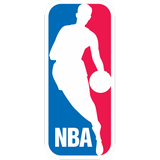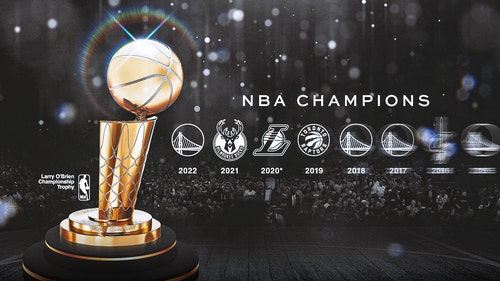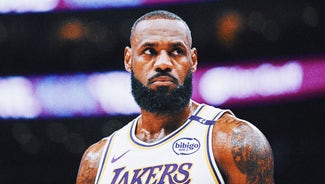
Cavalier crunch time: Shot distribution, shot selection come to the forefront

By Matt Zemek
As a two-day break between Games 4 and 5 allows for at least a partial reset of the 2015 NBA Finals, a specific tension point has emerged for the Cleveland Cavaliers. At the very least, if this tension point existed in previous games, it seems even more urgent now.
If Cleveland struggled with shot selection and shot distribution in previous games, the team’s smothering defense minimized the severity of that issue. Cleveland needed to rely on its ability to defend well, and because it succeeded so handsomely in Games 2 and 3, shot selection receded into the background of the series.
After Game 4, though, the outlook is different for David Blatt and his coaching staff, which (remember, this is not an insult …) includes LeBron James.
If the Cavs are going to beat the Golden State Warriors, they have to find the right kinds of shots for the right players, in the right mixture and proportion. In order to more fully understand what the Cavs are facing, let’s start with a breakdown of their three-point shooting in Game 4.
Thursday night, the Cavaliers hit just four of 27 threes, as the wear and tear so many pundits thought would catch up with them finally did. It took four games, though, for this to happen. In Games 2 and 3, the thin Cleveland bench really didn’t affect the Cavs — not enough to make a difference, at any rate. There was an automatic, push-button quality to the media’s concern about Cleveland’s depth issues, a reflexive reaction that was puzzling in that it ignored the fact that the Cavs were dictating the way every game of this series was being played.
Game 4, though, finally witnessed the evening of the scales — not so much due to Golden State’s adjustments, but to Golden State’s energy and confidence, which finally made an appearance in this series after Cleveland called the shots in Games 1 through 3. Now that the Warriors have landed their first true counterpunch of this series, Cleveland — on the road in Game 5 but given an extra day to rest — must freshly consider how it wants its shots to be distributed and taken.
It is a central part of the calculus for Game 5.
Let’s look a little more at the Cavs’ Game 4 three-point shooting: Matthew Dellavedova was cramping. His 2-9 line from three-point range is understandable. Iman Shumpert is carrying around a shoulder injury. His 1-5 line is understandable. LeBron James? He kept his large-minute totals at bay through Game 3, scoring whenever his team really needed a bucket. In Game 4, though, accumulated minutes plus some feisty and well-timed (and selective) double teams from the Warriors limited his game and the number of shots he took. After 38 shots in Game 1, 35 in Game 2 and 34 in Game 3, LeBron took only 22 shots in Game 4. He was just 1-of-4 from three-point range, 7-22 overall.
Predictably — and as said multiple times this week by staff writer and podcast co-host John Cannon — LeBron’s jumper has gotten worse as this series has continued. That jumper was better because of LeBron’s much fresher legs in Game 1, but in Game 4, it wasn’t the same.
Game 5 is so fascinatingly uncertain not just because Cleveland is coming off the first game of the series in which it didn’t control the proceedings, but because the accumulated wear and tear of the series is counterbalanced by the extra day off between games.
Here are the two most central questions of Game 5:
1) Will Stephen Curry finally play at or very close to his MVP-level standards?
2) How will Cleveland distribute its shots?
Cleveland could very reasonably think that with an extra day off, it can still rely on three-point shooting, which was a very solid 9-21 in Game 3 and did enough to supplement the offense of both LeBron and Timofey Mozgov in the low post. However, if the Cavs look at the strain being placed on their role-player shooters, they might choose a shift in emphasis, and that’s a central thing to watch for Sunday evening in Oakland.
There’s one player we haven’t yet mentioned in relationship to Game 4, and he completes the puzzle for the Cavs. If LeBron was overextended, Delly was cramping and Shumpert had that nagging shoulder injury in Game 4 — contributing to poor three-point shooting from all of them — one guy had no real excuse to perform so horribly.
While Bron/Delly/Shump went a combined 4-18 from three-point land in Game 4, J.R. Smith went 0 for 8. He’s not particularly hurt. His movement is not compromised. Yet, he has failed to deliver a single vintage game (to be more precise, vintage “Great J.R.,” not “Awful J.R.”) in this series.
Long-distance shooting requires an active, springy, lively knee bend and push-through from the legs. If Cleveland feels that even with the extra day off before Game 5, Delly’s legs aren’t where they need to be, the Cavs should accordingly tell their Australian spark plug to focus exclusively on defense … and give him as many first-half minutes off as they can, perhaps filling the gap with 10 Mike Miller minutes or something to that effect. If Delly needs to look for offense but he personally knows his legs won’t support three-point shooting, he should try to establish the 12-foot floater he is so capable of hitting.
What Delly faces in Game 5 is something LeBron must think through on a much larger scale — and with far greater consequences. LeBron needs to know where his body is on Sunday and, more specifically, what he thinks his body is ready to support. If the legs are back again, LeBron can use the three-point shot to spread the Warriors’ defense and create better opportunities for his teammates in important situations. If LeBron is still a little leg-weary, he will need to seek out the post-up and see if he can beat any Warrior double teams with kick-out passes to the perimeter. LeBron will also need to get to the foul line 15 or more times — when he does that, Cleveland succeeds.
What about the other players in the equation for Cleveland?
If Shumpert’s shoulder is still bothering him, he should try to take the ball all the way to the rim in Game 5. Jeff Van Gundy, on ABC, made note of the availability of rim attacks for Shump in Game 4, but Shump settled for mid-range jumpers he didn’t make (enough).
James Jones — also relatively healthy when compared to Delly and Shump — will certainly need to take a few threes in the first half and hope he can get on a mini-roll. What’s especially noteworthy about Jones’ situation is that with Delly being overextended in terms of minutes, Jones might need to play around 20 to 25 minutes in Game 5. If he can fill those minutes with three or four three-point makes, he could change the shape of Golden State’s defense to the extent that other Cavs can drive the ball to the basket and earn free throws. Delly and Shump wouldn’t need to put the ball up as much, either.
What’s about to be said should be prefaced by the realization that the Cavs — coaches and players — know how well they feel better than anyone else on the outside does. This is, therefore, just a general outline for a shot-distribution plan in Game 5. However, in light of where every player stands in terms of physical freshness and energy — not to mention defensive responsibilities at the other end of the floor — it represents a starting point for one of Sunday’s more important components inside Oracle Arena:
More from Crossover Chronicles:








